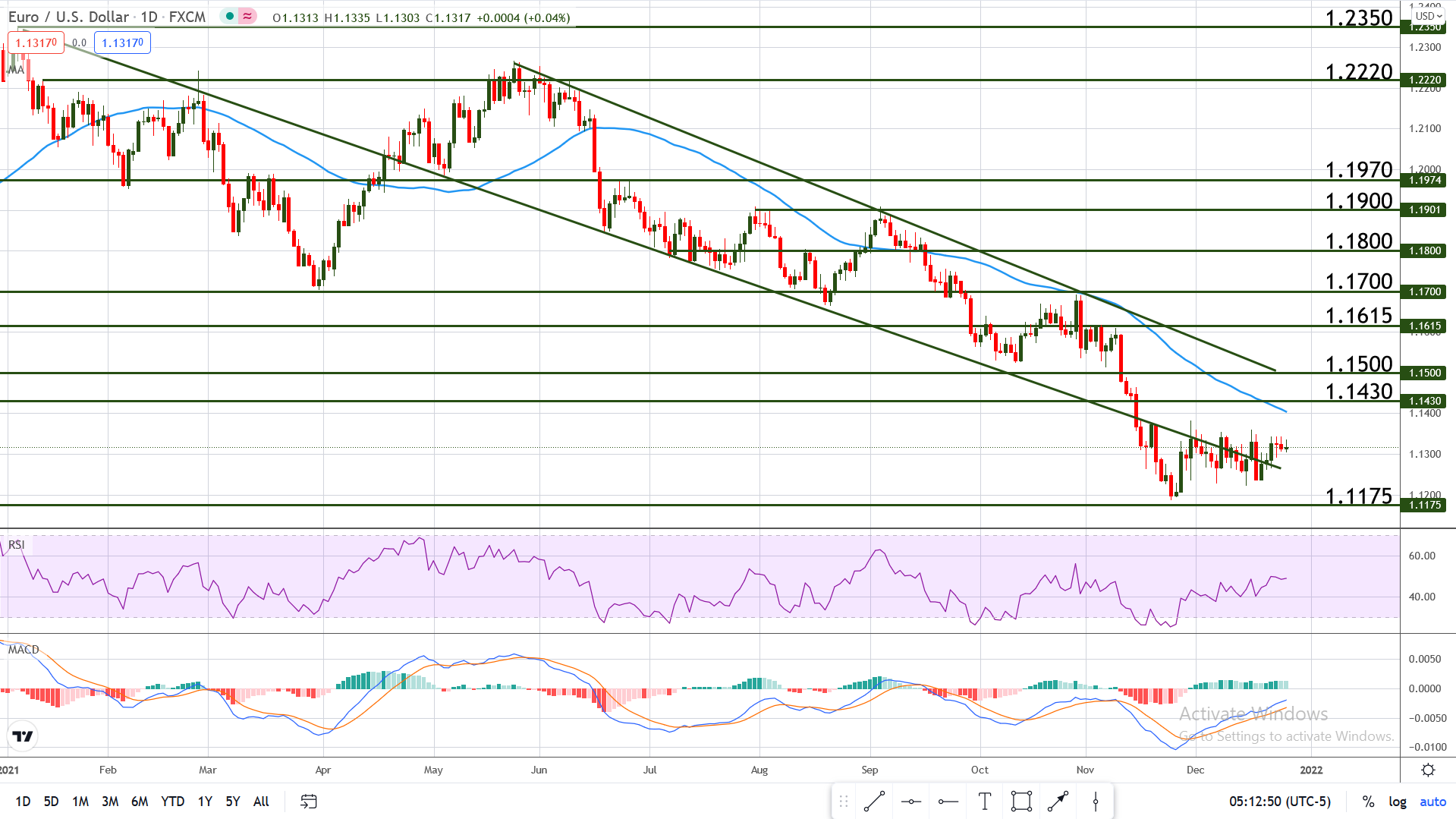The Euro Took a Beating In 2021 Will 2022 Be Any Different?
What To Expect From The Euro In 2022
by Bogdan Giulvezan
The first half of 2021 was wobbly for the Euro-Dollar pair but since June, the Euro embarked on a bearish journey, dropping from roughly 1.2200 to a low of 1.1186. The main point of interest during this second part of the year was the tapering of the U.S. asset purchase program and the consequent rate hikes that are expected sometime in 2022, as opposed to the European Central Bank’s unwillingness to take action and to hint towards increasing the rate.
With more than 6 months in the red, one would consider that a rally for EUR/USD is long overdue, but things still look gloomy for the single currency in 2022. That’s partly because some major central banks across the globe openly talk about their future interest rate hikes, offering forward guidance, while others have already increased the rate: this month, the Bank of England added 15 bps to its official bank rate, hiking from 0.10% to 0.25%. Nothing from the ECB thus far.
The ECB currently has two active bond-buying programs: the Pandemic Emergency Purchase Program and the older Asset Purchase Program. Although there’s no certainty, ECB’s forward guidance suggests that in early-2022 it will reduce buying through the former program and possibly increase the volume of the latter. This would basically mean that its monetary policy will remain largely unchanged. If other central banks will continue to cut their bond-buying programs and hike rates, the Euro is likely to continue on a bearish path against its counterparts. Of course, the ECB has been known to offer a few surprises over the years, so a sudden change of heart is not out of the question.
Economic Releases for the Last Week of the Year
Usually, the week between Christmas and New Year’s Eve lacks major releases and this week is no different. Today and tomorrow banks in the U.K. are closed in observance of Christmas Day and Boxing Day respectively. European and U.S. banks are open but no major economic data will come out.
On the Dollar side, we have some low-impact releases such as the Pending Home Sales scheduled for Wednesday and the Chicago PMI that comes out Thursday. Also Thursday the Spanish Flash CPI will be released but this indicator is not known to be a market mover. Friday banks across the globe will be closed in observance of New Year’s Eve.
Chart Analysis – EUR/USD
For the entire month of December, the EUR/USD pair has been trading in a range and this is probably how it will end the year. Price has re-entered the diagonal channel seen on the chart below but it is flat and totally lacks momentum, thus an accurate price prediction is difficult to make.
It is well known that the final week of the year is characterized by low volume and this leads to irregular volatility, meaning that price action may be sluggish and almost flat but it can also jump erratically without apparent reason. Bottom line is that you should be careful until volatility and volume return to normal.
